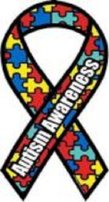 Welcome back to my ramblings, I’m glad you choose to make it. Today I want to discuss one of the more prevalent myths about people on the Autism Spectrum, namely that they either don’t feel emotions or, at least, don’t experience them to the same extent that neurotypical people do. Well no one could see my son when I wake him up in the mornings and continue to believe something so far out in left field for even a minute. If he doesn’t get his morning cuddle with either my wife or I, his whole day is just ruined; and he can be just as sweet the rest of the day as well. The problem with Wills, and many other people on the spectrum is three fold. One, they often do not know how to express their emotions in ways that most people would recognize unless they knew that person extremely well. Two, many people on the autistic spectrum lack the social skills and understanding to read another person’s emotions well; and three, they often cannot recognize what they are feeling or, if they do, respond to it in a less than effective way. Now points one and two are rather closely related since in the end they both stem from an autistic person’s difficulty with understanding social clues and interactions. It’s not that they don’t want to, but something about that missing piece of the puzzle in their brain keeps them from ever quite managing it. A faint frown tells most children that the person frowning is annoyed and it’s time to stop doing whatever it is that is annoying him or her, but the autistic child will miss it completely. Many people on the autistic spectrum tend to perceive things in different ways from the norm and so they may be focused on some other feature of the person frowning, or they may not even recognize it as a frown since it is not pronounced. Some others tend not to recognize when someone is talking to them unless the person speaking starts off by using their name, so they might recognize the frown but have absolutely no idea that it’s aimed at them. Which all leads back to the problem they have expressing their emotions in a way that meets with society’s stamp of approval. A baby learns from watching his or her parents what each expression, gesture, and act means. Thus a neurotypical person grows up knowing how to express his or her own expressions due to what they’ve seen the people around them do. But for a child with autism, that’s just not possible. Since all too often they don’t even recognize the subtle differences they never learn to respond the “right” way. So even though they have the same emotions as the rest, the way they express it can end up either subdued or blown way out of proportion; and they never realize it. As for point three, there seems to be some controversy in the medical community over whether people on the autism spectrum can recognize their emotions effectively or if the problem is more that they never learn effective means of controlling and expressing them. Personally, after watching my son deal with his emotions for all these years, I think it’s probably a little of both. Again, babies and young children learn what emotions are and how to handle them from the people they grow up with just as they learn the accepted way of displaying them. Yet for someone with autism, when they can’t even reliably interpret what others are feeling it’s all too easy for them to completely miss the clues that would tell them this is what I’m feeling right now is call and this is how to deal with it. I mean, think about it for a minute. For a normal child, the child sees his mother making him his favorite snack after school and when he asks why she goes to all that trouble he’s told “Because your my son and I love you.” The child then thinks to himself “Mommy loves me and she’s making me my favorite snack because she loves me. That must mean this how a person expresses love for someone”. The autistic child on the other hand asks the same question as well as he is able, gets the same reply and thinks to himself “Mommy loves me” but never even considers that it also demonstrates a way to effectively show love nor that it implies that we love our family so what he’s feeling when he thinks about his mom and dad must be love. Thus the neurotypical child learns an important lesson on how to show and handle love as well as what love is while the autistic child never even notices that there was a lesson to be learned. Apply this to all the other emotions we feel, and is it any wonder kids with autism seem like they either don’t have emotions or that what emotions they do have are vastly different from the norm? So, the fact is that children with autism do feel the same emotions we do; they just don’t know how to identify them effectively nor how to demonstrate them when they do. This can lead to huge misunderstandings with people who don’t have the experience to interpret what the autistic child (or adult) is feeling or saying, and thus the myth continues on it’s merry way through society. But now you, dear reader, know better. You may not be able to understand these children any better yet, but at least you know there’s something there to understand; and that is as much as anyone can ask.
0 Comments
Leave a Reply. |
Archives
September 2018
Categories
All
|
Proudly powered by Weebly

 RSS Feed
RSS Feed